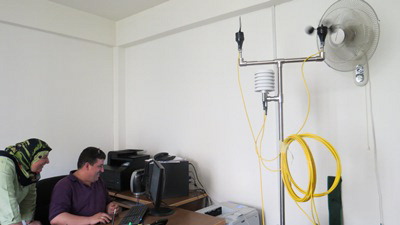Data collected by the research team was used to produce two coupled models—one describing flood wave movement from storm events and a second investigating baseline and potential enhancements to infiltration and groundwater recharge. The team prepared three papers as part of their findings and participated in the Global Conference on Energy Soil, Water, Air and Environment, held in Antalya, Turkey.
The PEER project team held technical workshops to share results and presentations on water resources and groundwater recharge for various stakeholders. In addition, a short course on groundwater recharge was organized for six undergraduate and two graduate students. The course covered well recharge types, objectives, water sources, and wellhead and wellfield designs. It also examined aquifer storage recovery (ASR) systems in aquifers with either freshwater or impaired groundwater. Instructors led the participants through the planning, design, operation, and management phases of artificial recharge systems. Team members also attended a groundwater modeling course in the United Arab Emirates.
The team continued to gather new sets of data and developed a new course entitled “Applied Groundwater Modeling,” which was offered by the Civil Engineering Department at Al al-Bayt University. They also met the community in the local study area several times and shared results of the project with them.
PublicationsShawaqfah, M., Alqdah, I., and Nusier, O.K. 2015. Water Resources Management Using Modeling Tools in Desert Regions: The Azraq Basin, Jordan.
International Journal of Modeling and Optimization 5(1):55-58.
https://doi.org/10.7763/IJMO.2015.V5.436 Shawaqfah Moayyad S., Alqdah Ibtihal T. Modeling the Flash Flood and Infiltration in Desert Regions: The Azraq Basin, Jordan. 2014. In:
SimHydro 2014. New Trends in Simulation. 11-13 June 2014 Ecole Polytech’ Nice (France).
https://www.persee.fr/doc/jhydr_0000-0001_2014_act_36_1_2336 



